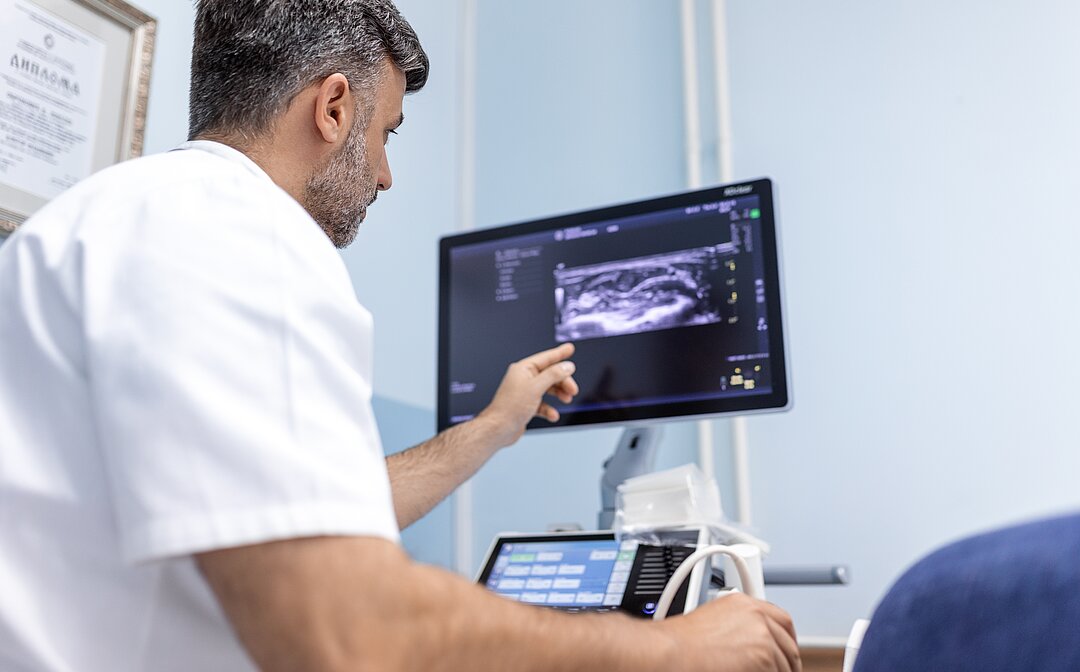Pulmonary Hypertension (PH) affects 1 in every 100 people worldwide. However, Pulmonary Arterial Hypertension (PAH) affects only about 50 people out of every million adults, making it a rare disease.2 Because it’s uncommon, many doctors may not see it often, which can make it harder to recognize and diagnose quickly.3 This is why raising awareness and understanding the signs early on is so important to refer patients to expert centers, where they can get the care they need.
Understanding PH as a rare disease
A closer look at PH and PAH
You may have heard the terms Pulmonary Hypertension (PH) and Pulmonary Arterial Hypertension (PAH) used in conjunction — and it can be confusing to understand how they’re related.
Think of Pulmonary Hypertension as an umbrella condition. It refers to high blood pressure in the arteries of the lungs — pressure that’s abnormally high because the blood vessels become narrowed, stiff or blocked. That makes it harder for the heart to push blood through the lungs5 where it picks up oxygen and releases carbon dioxide. Over time, this increased workload causes the right ventricle to undergo hypertrophy — a thickening and enlargement of the muscle. But unlike training other muscles at the gym, this isn’t healthy — over time, the right heart may weaken, become less efficient, and eventually fail if the condition remains untreated. This can happen for many different reasons, so PH is divided into five groups, based on the underlying cause.4 These causes range from heart disease and lung conditions to chronic blood clots or rare genetic factors.4
Within this spectrum is Pulmonary Arterial Hypertension (PAH) — one specific group, called Group 1 PH.4 In PAH, the problem lies directly within the pulmonary arteries themselves.5 These arteries are narrow, stiff, and thickened which causes pulmonary hypertension, the increased blood pressure in the lungs.
PAH is less common than other forms of PH, but it is also a progressive disease and requires specialist treatment and long-term care. It can affect people of any age but is more frequently diagnosed in women around the age of 50 and is sometimes linked to autoimmune diseases like scleroderma or lupus5, which favor the mutation of the vessels.
What causes PH?
Pulmonary Hypertension (PH) is not a single disease — it’s a condition that can develop for many different reasons. What all types of PH have in common is high blood pressure in the lungs, which puts strain on the heart.5 But the underlying causes vary depending on the type of PH a person has.
References:
- Hoeper M, et al. Lancet Respir Med 2016;4:306–322.
- Humbert M et al., ESC/ERS 2022 Guidelines European Heart Journal. 2022;43(38):3618–3731. (2022)
- Small M, et al. Ther Adv Respir Dis 2024;8:1–14.
- Manek G and Bhardwaj A. Statpearls. Available at: www.ncbi.nlm.nih.gov/books/NBK482463/. Last Accessed August 2025.
- Montani D, et al. Orphanet J Rar Dis 2013;8:97.
- https://phassociation.org/
- Tea I and Hussain I. Methodist DeBakey Cardiovascular Journal 2021;17:92–100.

